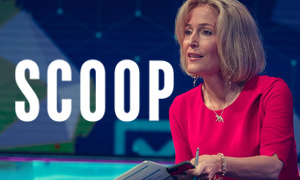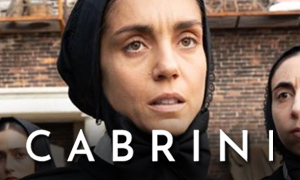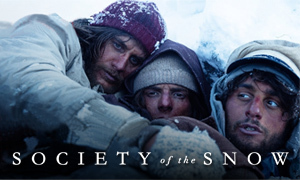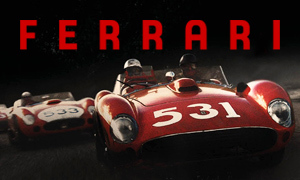Goodbye Christopher Robin: History vs. Hollywood
| REEL FACE: | REAL FACE: |
Domhnall Gleeson
Born: May 12, 1983 Birthplace: Dublin, Ireland | A. A. Milne
Born: January 18, 1882 Birthplace: Kilburn, London, England, UK Death: January 31, 1956, Hartfield, Sussex, England, UK (stroke) |
Will Tilston
| Christopher Robin Milne
Born: August 21, 1920 Birthplace: Chelsea, London, England, UK Death: April 20, 1996, Totnes, Devon, England, UK (myasthenia gravis) |
Margot Robbie
Born: July 2, 1990 Birthplace: Dalby, Queensland, Australia | Dorothy "Daphne" Milne
Born: 1890 Death: 1971 |
Stephen Campbell Moore
Born: November 30, 1979 Birthplace: London, England, UK | Ernest Howard 'E. H.' Shepard
Born: December 10, 1879 Birthplace: St John's Wood, London, England, UK Death: March 24, 1976, London, England, UK |
Kelly Macdonald
Born: February 23, 1976 Birthplace: Glasgow, Scotland, UK | Olive Rand
|
Winnie-the-Pooh (Movie Bear)
Several different prop bears were used in the movie in order to show aging (wear). | Edward Bear (renamed Winnie-the-Pooh)
Born: August 1921 Birthplace: Harrods Department Store, London, England, UK Christopher Robin received the bear on his 1st birthday. |
Piglet
| Piglet
Born: 1920s Christopher Robin's original Piglet stuffed animal is on display along with the others at the New York Public Library. |
Tigger
| Tigger
Born: 1920s Christopher Robbin's original Tigger doll inspired the character, who first appeared in 'The House at Pooh Corner' in 1928. |
Eeyore
| Eeyore
Born: 1920s Christopher Robin's real Eeyore stuffed animal inspired the gloomy donkey who first appeared in A. A. Milne's 1926 book 'Winnie-the-Pooh'. |
Bear at Zoo in Movie, Portraying Winnipeg (Winnie)
| Winnipeg (Winnie)
Born: 1914 Birthplace: Ontario, Canada Death: May 12, 1934, London Zoo Winnie, pictured in 1916 at the London Zoo, inspired Christopher Robin to name his toy bear Winnie. |
Did A. A. Milne really suffer from post-traumatic stress disorder from his time in the war?
In the movie, A. A. Milne's time fighting for the British Army in WWI leads to PTSD that causes him to move his family from London to the calm serenity of the English countryside. The true story behind Goodbye Christopher Robin is a little less clear when it comes to what extent Milne was affected by PTSD, in part because the condition wasn't understood and recognized the way it is today. Though there is no direct evidence that Milne suffered from PTSD, we do know that his experiences fighting in the war bore down heavily on him. Milne wrote in his autobiography It's Too Late Now that it caused him to become "almost physically sick" to recall "that nightmare of moral degradation, the war."
He mentions a trip to the zoo with his son Christopher Robin, where they observed the bugs in the insect house, stating that the sight of the large, grotesque insects induced great discomfort. "I could imagine a spider or a millipede so horrible that in its presence I should die of disgust," Milne wrote in his autobiography. "It seems impossible to me now that any sensitive man could live through another war. If not required to die in other ways, he would waste away of soul-sickness." In the movie, the character's sensitivities are presented as a direct result of the war, with him flinching at the sounds of corks and balloons going pop. In real life, it's hard to know, for example, how sensitive Milne was before the war to things like giant creepy insects and how much the war played a part in stimulating this discomfort. -TIME.com
Did A. A. Milne's wife Daphne sell his poem without him knowing?
Not exactly. As in the movie, the poem that she sold was his well-known 1923 poem "Vespers", which closes with the lines, "Hush! Whisper who dares! Christopher Robin is saying his prayers." During our research to answer the question, how accurate is Goodbye Christopher Robin, we discovered that Milne's wife Daphne did sell the poem to Vanity Fair, but according to reports, it was only after Milne told her that she could have the money if she was able to sell the poem to a magazine. -Fortune.com
Was Daphne Milne really an absentee mother?
In the Goodbye Christopher Robin movie, it is Christopher's nanny, Olive (Kelly Macdonald), who adopts the role of mother while Daphne is busy attending to her duties as a socialite. The true story doesn't reflect this as much. Christopher Robin wrote in his autobiography The Enchanted Places, "When a child is small it is his mother who is mainly responsible for the way he is brought up. So it was with me. I belonged in those days to my mother rather than my father."
According to the New York Times, Christopher once said that it was his mother who gave his father most of the ideas for the Pooh stories. "It was my mother who used to come and play in the nursery with me and tell him about the things I thought and did. It was she who provided most of the material for my father's books." That included playing with the original Winnie-the-Pooh stuffed animals.
Still, there was definitely a dysfunctional side to Christopher's relationship with his mom and it has been widely reported. Perhaps the most telling sign is the fact that he saw his mother only once in the 15 years she was alive after his father's passing in 1956, a point that the movie fails to include. -The Telegraph
Is Goodbye Christopher Robin based on a book?
How did Christopher Robin get his teddy bear Winnie?
During our investigation into how accurate Goodbye Christopher Robin is, we learned that Christopher's mother Daphne bought the stuffed toy bear in August 1921 at Harrods, the famous London department store. It was a gift for her son's first birthday. The bear was made of golden mohair, with a black nose and shiny glass eyes. Its arms and legs were movable. Christopher eventually changed its name from Edward Bear to Winnie.
Did the name Winnie come from a real bear?
Yes. The inspiration for Winnie-the-Pooh's name came from a female black bear that A. A. Milne and Christopher Robin visited at the London Zoo. The bear had been forfeited to the zoo by Lieutenant Harry Colebourn, a cavalry veterinarian who bought Winnie for $20 in Canada during the First World War and brought her to England. The name Winnie is short for Winnipeg, Manitoba, Colebourn's adopted hometown. He had to leave Winnie with the London Zoo when he left for France with his unit. The bear stayed there from 1915 until her death in 1934. The story of their friendship is told in the children's picture book Finding Winnie, written by the great-granddaughter of Colebourn. Their friendship is also chronicled in the 2004 movie A Bear Named Winnie starring Michael Fassbender as Colebourn. Christopher Robin named his teddy bear Winnie after the bear.
Did Christopher Robin really go into the real bear's cage to have his picture taken?
Yes. Even though it's hard to imagine today, in 1928 Christopher Robin really did enter the real Winnie's enclosure at the London Zoo for a photo-op. The actual photo can be seen below on the left. Christopher is feeding the bear honey from a spoon.
Were E. H. Shepard's drawings of Winnie-the-Pooh modeled after Christopher Robin's teddy bear?
No. As we explored the Goodbye Christopher Robin true story, we discovered that the drawings themselves were modeled after illustrator E. H. Shepard's own son's stuffed animal toy bear named Growler.
Did Christopher Robin really hate the attention that came from the books?
Not entirely. When he was a young boy he enjoyed the attention that fame brought. "It was exciting and made me feel grand and important," he told journalist and friend Gyles Brandreth later in life. As a child, Christopher Robin Milne made public appearances, wrote to fans, and even made a record. In the Goodbye Christopher Robin movie, he does a Q&A session but is depicted as being overwhelmed by his rabid stalker fans. Christopher's favorable attitude toward his alter ego did eventually change when he was sent to boarding school around age eight or nine, something that the movie only briefly focuses on. While there, he was bullied so much for being the boy in the books that he came to detest the bear. -The Telegraph
Still, it was more of a love-hate relationship, as he stated in his autobiography The Enchanted Places. "At home I still liked [Christopher Robin], indeed felt at times quite proud that I shared his name and was able to bask in some of his glory. At school, however, I began to dislike him and I found myself disliking him more and more the older I got. Was my father aware of this? I don't know." It doesn't seem that A. A. Milne was aware of the negative effects that the books had on his son. In his own autobiography he said as much, writing that the fame that came to be associated with his son "never seemed to affect us [the family] personally."
When he became an adult, Christopher lived a fiercely independent life. For a long time, he swore off the financial help that his fictional namesake could have brought him. He operated a bookshop and wrote three volumes of autobiography, which helped him to reconcile with his past but undoubtedly sold better because of his name. He eventually did embrace the money that came with being Christopher Robin Milne, but according to him, only because it could improve the life of his severely disabled daughter. "I had to accept it, for Clare's sake." -The Telegraph
Was A. A. Milne frustrated that his own career as a poet, playwright and novelist was eclipsed by Winnie-the-Pooh?
Yes, in researching the accuracy of Goodbye Christopher Robin, we learned that A. A. Milne was indeed frustrated that his success with Winnie-the-Pooh eclipsed his other accomplishments and literary endeavors. In 1952, Milne said that in writing his four short Winnie-the-Pooh books, he created "little thinking / All my years of pen-and-inking / Would be almost lost among / Those four trifles for the young". As Goodbye Christopher Robin screenwriter Frank Cottrell Boyce put it, Milne wanted to be Hamlet but he was hailed as a clown, and no matter how hard he tried to break the association, the gravity of his success kept him linked indelibly with the clown. -The Guardian
Was A. A. Milne really vehemently anti-war?
However, Milne wasn't always passionately anti-war during his lifetime. He voluntarily enlisted in World War I, but he said later that he never fired a shot at anyone. Even though he openly voiced his plea for pacifism following The Great War, he still saw Britain's involvement in World War II a necessity. "I believe that war is a lesser evil than Hitlerism, I believe that Hitlerism must be killed before war can be killed," he wrote in a letter on display in London's Imperial War Museum. Too old to serve on the front lines, Milne became a captain in the British Home Guard during World War II. The movie omits mentioning that in 1940 he released War with Honour, which was largely a retraction of his earlier work Peace with Honour.
Are Christopher Robin's original Winnie-the-Pooh stuffed animals on display to the public?
Yes. The original Pooh dolls have been displayed in the main branch of the New York Public Library since 1987. They are located in the Children's Center inside the Stephen A. Schwarzman Building at Fifth Avenue and 42nd Street. Christopher Robin's dolls were first brought to the United States in 1947 and remained in the possession of A. A. Milne's American Publisher, E. P. Dutton, until their donation to the library.
However, not everyone is pleased with the dolls being on display at the library. A 2014 Newsweek article by Cole Moreton was titled, "Behind Bullet-Proof Glass, Winnie-the-Pooh is in Jail." In his article, Moreton mentions the campaigns in Britain to free the original Pooh stuffed animals and return them to their homeland. Back in 1998, Tony Blair's Labour MP even persuaded him to broach the subject with President Bill Clinton. A spokesman for the White House responded, "The notion that the United States would lose Winnie is utterly unbearable." No pun intended, perhaps.
The British argue that Pooh is being largely forgotten in his display case at the library and that he would be properly displayed and adored back home in England, where countless fans would visit. The Goodbye Christopher Robin movie will undoubtedly add fuel to their efforts. Yet, it can't be overlooked that trademark ownership rights to Winnie-the-Pooh belong to Disney, leading one to wonder if the dolls would do better in a museum on the grounds of one of Disney's theme parks, a notion that would surely offend Pooh purists, but would at least bring Christopher Robin's once-loyal playmates more attention.
Hear A. A. Milne's Voice & Watch the Movie Trailer
Listen to the real A. A. Milne read from his classic 1926 book Winnie-the-Pooh and watch the Goodbye Christopher Robin movie trailer.
Link-to-Learn More:







